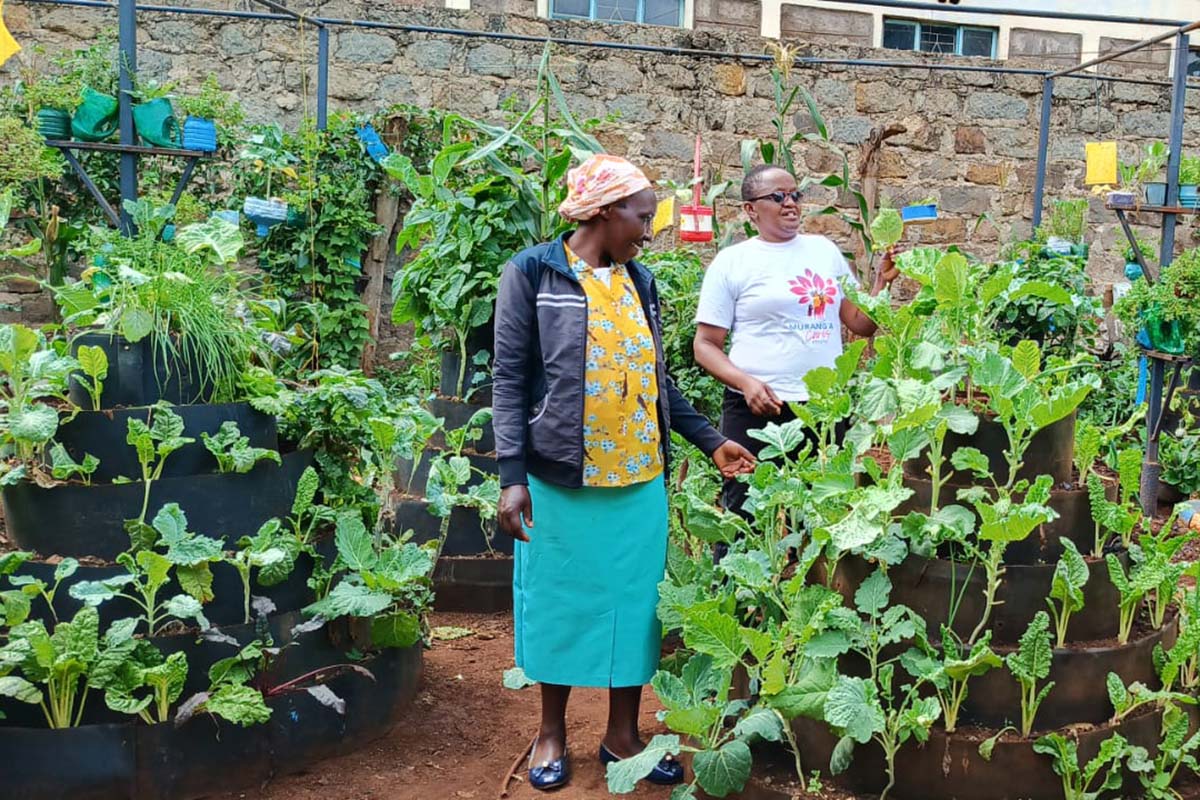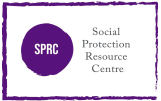

Digital literacy in Pakistan:Where do we stand?

Since the onset of Covid-19, there has been increasing reliance on the digital world. Businesses must grow accustomed to e-commerce and social media to increase and retain customers. Amid these rapid changes, Samara Ali, a 27-year-old Correspondent from Pakistan questions, where does Pakistan stand in the race?
Pakistan’s pace in the start-up landscape has been tremendously fast, with a 47% growth in freelance earnings as of 2019 . In addition to this, World Advertising Research Center (WARC) has predicted that Pakistan will be among the countries with the highest growth in smartphone use by 2025. Yet Pakistan has one of the slowest growth rates in internet penetration. This means that entrepreneurship in Pakistan will not be sustainable unless more of the population has access to the internet.
The average Pakistani citizen has had very limited digital experience.
According to the After Access Report as of 2019 , internet enabled mobile phones are mainly used for social media and not for the vast range of digital services.
The situation is even worse for Pakistani women. Taking Stock: Data and Evidence on Gender Equality in Digital Access, Skills and Leadership states that as of March 2019 reports that only 3% of women in Pakistan could copy or move a file on a computer. Similarly, only 2% of women from Russia were able to perform the same task while 89% of women in Brunei were capable of completing this task. These factors mean that digital literacy has a long way to go in Pakistan.
Increased digital literacy results in a cascade of advantages for an economy. I would like to highlight a personal experience which would help substantiate this viewpoint.
Earlier this month, I attempted to secure my learner’s permit through the Sindh Driving License Authority. Due to the pandemic, the provincial government made strong efforts to digitalize the application process. Not only was I able to avoid overcrowding in the registration office but the application process which would usually take around 2 to 3 hours on a normal day only took a few minutes to be completed.
If we were to replicate this on a larger scale, transactions, processes, and services would become faster and more efficient and our economy more productive.
This is exactly why digital literacy is profound; when we begin to use digital tools to our advantage, we will drive our economy towards sustainable growth and enjoy a better quality of living.
Photo Credit: Shutterstock
About Samara Ali: I’m currently a graduate student who has always harboured an interest in speaking on current issues through her writing. I hope to contribute greatly to the missing Pakistani narrative in a world bustling with opinions.
About the author

Samara Ali is a business graduate from Pakistan who loves to discuss ideas and achievements that can create cultural change around the world, in any magnitude.
Related articles

The UK – Commonwealth Slavery Reparations Saga

How the Digital Revolution is Reshaping PR: Adapting Strategies for a New Era

Families in Kenya being strengthened to allow children in care institutions to return home

Submit your content
Begin your search here.
- Privacy Overview
- Strictly Necessary Cookies
- 3rd Party Cookies
This website uses cookies so that we can provide you with the best user experience possible. Cookie information is stored in your browser and performs functions such as recognising you when you return to our website and helping our team to understand which sections of the website you find most interesting and useful.
Strictly Necessary Cookie should be enabled at all times so that we can save your preferences for cookie settings.
If you disable this cookie, we will not be able to save your preferences. This means that every time you visit this website you will need to enable or disable cookies again.
This website uses Google Analytics to collect anonymous information such as the number of visitors to the site, and the most popular pages.
Keeping this cookie enabled helps us to improve our website.
Please enable Strictly Necessary Cookies first so that we can save your preferences!
Articles by region:
- Sub-Saharan Africa
- MENA Middle East North Africa
- Southeast Asia and Pacific
- Latin America and the Caribbean
- Central Asia, Caucasia, Southeast Europe and Russia
- High-income countries

Elasticsearch Mini
Sustainable development requires global awareness and local action, development and cooperation, entwicklung und zusammenarbeit, promote digital learning in pakistan.

Education is Pakistan’s Achilles heel. More than 230 million people live in Pakistan, making it the fifth most populous country in the world. About one third of them is aged below 15, according to the UN Population Fund (UNFPA). It is imperative to ensure that this young and dynamic population has access to quality education if Pakistan wants to achieve its economic and socio-political potential.
However, the country’s public investment in education is dismal, with Pakistan spending only 2.4 % of its total GDP on education in 2021. This figure has remained between 1.8 and 3 % in recent decades, paling in comparison to EU member states that allocate between 4.5 and 5.5 % of their GDP to education.
Thus Pakistan’s poor literacy rates should come as no surprise. They differ significantly between the country’s provinces, between 66.3 % in Punjab and 54.5 % in Baluchistan. Since the 18th Constitutional Amendment in 2010, education has become a provincial matter. Each region is responsible for its own policies.
Within the provinces, literacy rates can be expected to be significantly higher in urban centres than in rural areas. Additionally, men enjoy notably higher rates than women. This holds true for all ages across the country.
Digitisation is key
To improve education for all, access to technology and digitisation are essential. The Covid-19 pandemic brought this need into sharp focus, as lockdowns and job losses disrupted digital connectivity. Online teaching underscored the importance of internet access as an integral component of education (see box ).
However, Pakistan has been slow to adopt technological progress, particularly in the education system, largely due to high costs. The country ranks in the bottom quarter of the Inclusive Internet Index, which evaluates nations’ availability, affordability, relevance and readiness of internet services. The gender gap is also a significant challenge, with just 19 % of Pakistani women accessing mobile internet compared to 37 % of men in 2020.
The country’s government has taken measures to address these issues. In 2017, Pakistan’s Ministry of Information launched the Digital Pakistan Policy 2017, which aimed to promote IT usage across all sectors, including education. Its objectives included:
- enhancing public-private partnerships,
- developing accessible software,
- incorporating IT accessibility in all competitive exams and
- subsidising assistive technologies’ costs.
The policy also aimed at providing pupils with better digital learning opportunities, including access to better tools. It could have proven effective for students, especially those enrolled in public schools during Covid-19 lockdowns. However, it was abandoned after a new government took over following the 2018 general elections.
In Punjab, the provincial government had set up the Punjab Information Technology Board (PITB) to provide IT services and infrastructure, with a plan to implement a massive internet connectivity spread. A 2017 education policy aimed to capitalise on this initiative. However, political interference in the PITB’s structure and work following the regime change in 2018 led to earlier formulated policies and actions being set aside.
Additionally, Pakistan’s digital infrastructure has been subject to government restrictions, including the banning of websites like Youtube and Wikipedia on the grounds of “offensive” or “blasphemous” content.
Private sector steps in
As the Pakistani government continued to neglect the education sector, private educational institutes have stepped up to the plate, investing in quality education and leveraging technological advancements and digitisation. These institutes are primarily concentrated in three major urban centres – Lahore, Karachi and Islamabad. They predominantly offer secondary education based on British and American systems. However, their high fee structures make them a rather exclusive option.
The private sector has assumed a critical role in Pakistan’s education system. In 2017/2018, privately owned institutes accounted for 38 % of all educational institutes and 44 % of total enrolments. While some of these “elite” institutions provide access to modern technology, disparities persist across the board.
Among the first institutions and organisations in Pakistan to use digital technology for education purposes have been some that provide education and training to persons with disabilities, including the Ida Rieu Welfare Association, the Pakistan Association of the Deaf, the Aziz Jehan Begum Trust & Institute and the Special Talent Exchange Program. Additionally, some higher educational institutes increasingly leverage assistive technologies and digitisation to make education more accessible to persons with disabilities. For example, Lahore University of Management Sciences (LUMS) has established its Assistive Technology Lab, a facility designed to assist impaired students and staff.
For Pakistan to prosper as a country, better education for all is paramount. Investing in digitisation and education should be the main tool to achieve this goal, both in the private and public sectors. Notably, closing the gender gap in education and access to technology should be a top priority.
Marva Khan is an assistant professor of law at LUMS (Lahore University of Management Sciences) and co-founder of the Pakistani Feminist Judgments Project. [email protected]
You might also like
Digital learning during the pandemic in pakistan, related articles, why pre-school education matters, the fate of a girl from zimbabwe, experiencing feminism in uganda, poverty reduction.
The first UN Sustainable Development Goal is to end poverty in all its forms everywhere.
Gender Equality
In order to achieve gender equality, it is necessary to empower women and girls.
Achieving the UN Sustainable Development Goals will require good governance – from the local to the global level.
Sustainability
The UN Sustainable Development Goals aim to transform economies in an environmentally sound manner, leaving no one behind.
Social Protection Resource Centre

Empowering Women in Pakistan The Role of Digital Literacy
Author: Seyyda Taskeen Abbas Naqvi (Research Associate)
International Women’s Day provides us with an opportunity to reflect on the progress that has been made towards gender equality, as well as the challenges that still remain. While many countries around the world have made strides in recent years, Pakistan continues to face significant challenges in achieving gender parity. Maternal mortality figures are also alarming, with one out of every 89 Pakistani women dying of maternal causes. Complications of childbirth still account for one fifth of deaths among women of childbearing age. The recent floods of 2022 have had a devastating impact, particularly on women and girls, who continue to be at risk of violence, exploitation, and abuse. The floods 2022 have affected around 33 million Pakistanis, including an estimated 8.2 million women of reproductive age. Furthermore, according to the UNFPA, about 650,000 pregnant women in the flood-affected areas lack access to maternal health services due to infrastructural damage.
According to the Global Gender Gap 2022 report, Pakistan ranks as the second-worst country in terms of gender parity, with a ranking of 145 out of 146 countries. The situation is particularly evident when it comes to economic participation and opportunity, where Pakistan ranks at 145 out of 146, with only 21.4% of women participating in the labor force compared to 67.9% of men. Similarly, Pakistan ranks at 135 in terms of educational attainment, while India and Bangladesh are ranked at 107 and 123 respectively. In terms of health and survival, Pakistan, India, and Bangladesh rank at 143, 146, and 129, while in political empowerment, Pakistan, India, and Bangladesh are ranked at 95, 48, and 9 respectively.
The gender inclusion gap in Balochistan and KP is cause for concern, with alarmingly low rates of economic and social inclusion for women. The Women Peace and Security (WPS) Index (2021-22) shows that in Balochistan, only 8% of women are employed, and just 13% have financial inclusion. Women’s participation in decision making is also low, at only 10%. Similarly, in KP, only 12% of women are employed, and just 17% have financial inclusion. Participation in domestic decision making is slightly higher at 19%, but still concerning. Additionally, the education gap is also pronounced, with only 5% of girls in KP and 4% in Balochistan completing secondary education. These statistics make it clear that there is still a long way to go to close the gender inclusion gap in Pakistan.
With a view to promoting gender equality, Pakistan is placing increasing emphasis on the implementation of social protection initiatives targeted specifically at women. The Benazir Income Support Programme (BISP) is one of the most comprehensive programs in this regard, offering a range of measures such as unconditional cash transfers, as well as other initiatives including Waseela-e-Haq, Waseela-e-Rozgar, Waseela-e-Sehat, and Waseela-e-Taleem, all of which are designed to enhance the economic and social status of women.
Moreover, in the current era, digital literacy has become an essential requirement for women, enabling them to access education, employment opportunities, and equitable resources. As an increasing number of sectors transition to online platforms in the wake of the COVID-19 pandemic, women who lack access to digital devices and training will be at a disadvantage. According to The Mobile Gender Gap Report 2022, Pakistan’s gender gap in mobile ownership stands at 33%, while the gender gap in mobile internet usage is 38%. The primary factors contributing to these disparities include the lack of family approval (35%) and low levels of literacy and digital skills (23%). Notably at Provincial level, in Balochistan, only 16% of females are mobile phone users, while in KP, this percentage rises to 37%. Without urgent action to address this digital divide, Pakistan will lag behind in economic development.
Fortunately, there are some steps being taken to address this issue. The Digital Pakistan Policy 2018 was a step towards bridging the digital divide, and initiatives like The Digital Literacy Program and “The ICT for Girls” program are working to provide access to digital education and technology for women and girls in Pakistan. Additionally, The Jazz Smart Schools program is helping to break down cultural and social barriers to education and technology, empowering women from rural areas to pursue careers in the digital field.
However, much more needs to be done particularly women’s access to digital technologies (particularly in rural or tribal areas). The Ministry of Education must collaborate with educational institutes along with non-governmental and civic organizations to form a strategy to incorporate digital training for both male and female students. These strategies should be aimed at equipping upcoming generations with adequate knowledge and skills to keep up with the rapidly-evolving technological landscape.
In conclusion, International Women’s Day is a reminder that we still have a long way to go when it comes to gender equity, and that we must all work together to create a more inclusive world. By addressing the challenges faced by women in Pakistan, including lack of access to digital technologies and the ongoing gender gap, we can help to ensure that all women have the support and resources they need to thrive.

IMAGES
VIDEO
COMMENTS
The present study focuses on research objectives; to access the impact of digital technology on literacy among Pakistani youth, to address the scope of digital expertise to improve the academic learning among students, to examine the obstacles being posed by excessive exposure to digital technology in the promotion of literacy.
Since the onset of Covid-19, there has been increasing reliance on the digital world. Businesses must grow accustomed to e-commerce and social media to increase and retain customers. Amid these rapid changes, Samara Ali, a 27-year-old Correspondent from Pakistan questions, where does Pakistan stand in the race?
Results revealed that digital literacy had significant effects on communication skills, research skills and confidence of the students and insignificant effect on students' CGPA.
The present study focuses on research objectives; to access the impact of digital technology on literacy among Pakistani youth, to address the scope of digital expertise to improve the academic learning among students, to examine the obstacles being posed by excessive exposure to digital technology in the promotion of literacy.
For Pakistan to prosper as a country, better education for all is paramount. Investing in digitisation and education should be the main tool to achieve this goal, both in the private and public sectors. Notably, closing the gender gap in education and access to technology should be a top priority.
The newly emerging concept of Digital Literacy encompasses a set of skills including sociological, emotional, and cognitive skills to be better equipped to work in a digitally-oriented environment and be convenient with digital gadgets.
This mixed-method study investigates the state of media and information literacy education in Pakistan by underlining the availability of relevant courses and trained teaching and research faculty at both public and private universities.
By addressing the challenges faced by women in Pakistan, including lack of access to digital technologies and the ongoing gender gap, we can help to ensure that all women have the support and resources they need to thrive.
Digital Education in Pakistan: Prospects & Challenges. According to UNESCO, 58 million children over the age of 15 are illiterate in Pakistan, while 22 million children in the age group of 5-16 years are school dropouts. With the pandemic impacting every part of the world, the situation of Pakistan’s education sector is worsening.
As Pakistan is lacking globally behind with respect to the digital literacy, there is earnest need to peep into the situation and take maximum benefits of digital literacy because in